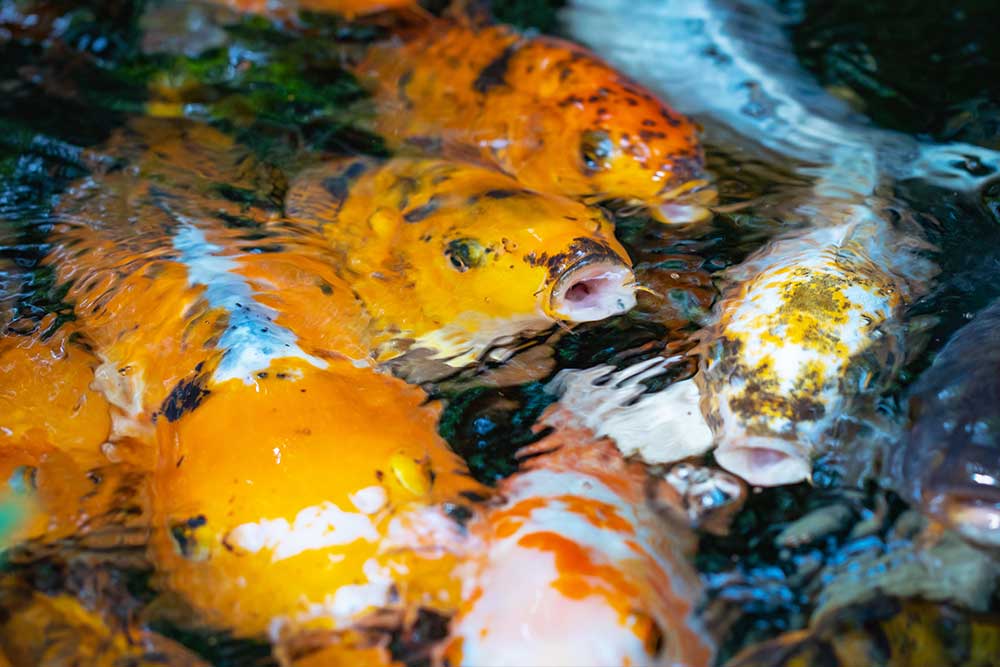When caring for koi fish, one of the things that you would worry about is not feeding them enough and inadvertently starving them out of ignorance. That’s normal for any first time koi owner! But the truth is, the feeding schedule for koi fish really depends on various factors. So, how often do koi fish need to be fed? Let’s take a look at the various factors at play.
Size Of Koi
Let’s be honest – feeding koi is a joy. It’s such a wonderful thing to watch the brightly colored, beautiful koi swimming up to you and taking food from you, either in the water or especially if it’s directly out of the palm of your hand! On top of that, koi fish are so beautifully animated and seem to revel in their interactions with humans, making it even more tempting to feed the koi for longer periods of time. Some may think that because large koi need to eat more than smaller koi, they should be fed for longer times. However, do take note that large koi do have larger mouths, and eat much more in the same amount of time as compared to a smaller koi! Generally, we can keep to a three minute rule – let the koi eat what it is able to within three minutes, then stop, and remove any remaining food pellets from the pond.
Water Temperature And Quality
The temperature and quality of the pond water is important in determining how you would feed your koi. For example, in winter or when the water is below 48 degrees Fahrenheit, you would definitely not feed your koi as it will be in hibernation! Between 48 and 63 degrees Fahrenheit, you would want to feed your koi easy to digest spring & fall food, once per day. Between 64 and 88 degrees Fahrenheit, you can feed them rich, high quality foods 2 to 4 times per day, as fish are much more active and also grow faster in the summer. Above 88 degrees Fahrenheit you would want to be careful though as oxygen levels in the water can become dangerously low, and you need to focus more on aeration of the water so your koi can breathe underwater. You would also want to reduce feeding, and watch your koi closely for signs of stress. You can also use Microbe-Lift Stress Relief in the water to help reduce stress in your koi.
Another concern is if there is a high volume of ammonia, nitrates and nitrites in your pond. These toxins are the byproducts of fish excrement, and are deadly to fish. Overfed koi ponds are especially susceptible to this kind of toxic buildup. In order to remove toxins, you can change the pond water by at least 50 percent.
Pond Ecosystem
Frankly, if your pond is essentially a well-balanced ecosystem, koi fish can survive as they do in nature – by feeding on algae, insects, plankton and other microorganisms in the water. You don’t have to feed them that often! Once every two to three days is enough for your koi to thrive. Of course, this does not apply to brand new ponds or ponds with extremely clean and filtered water.


 Blog
Blog



